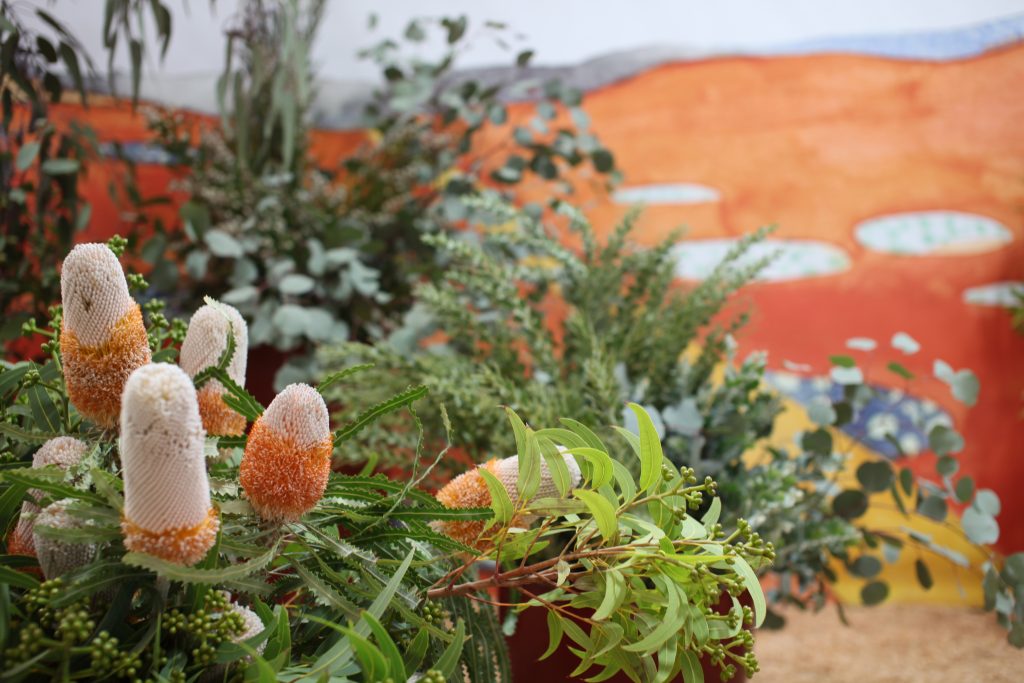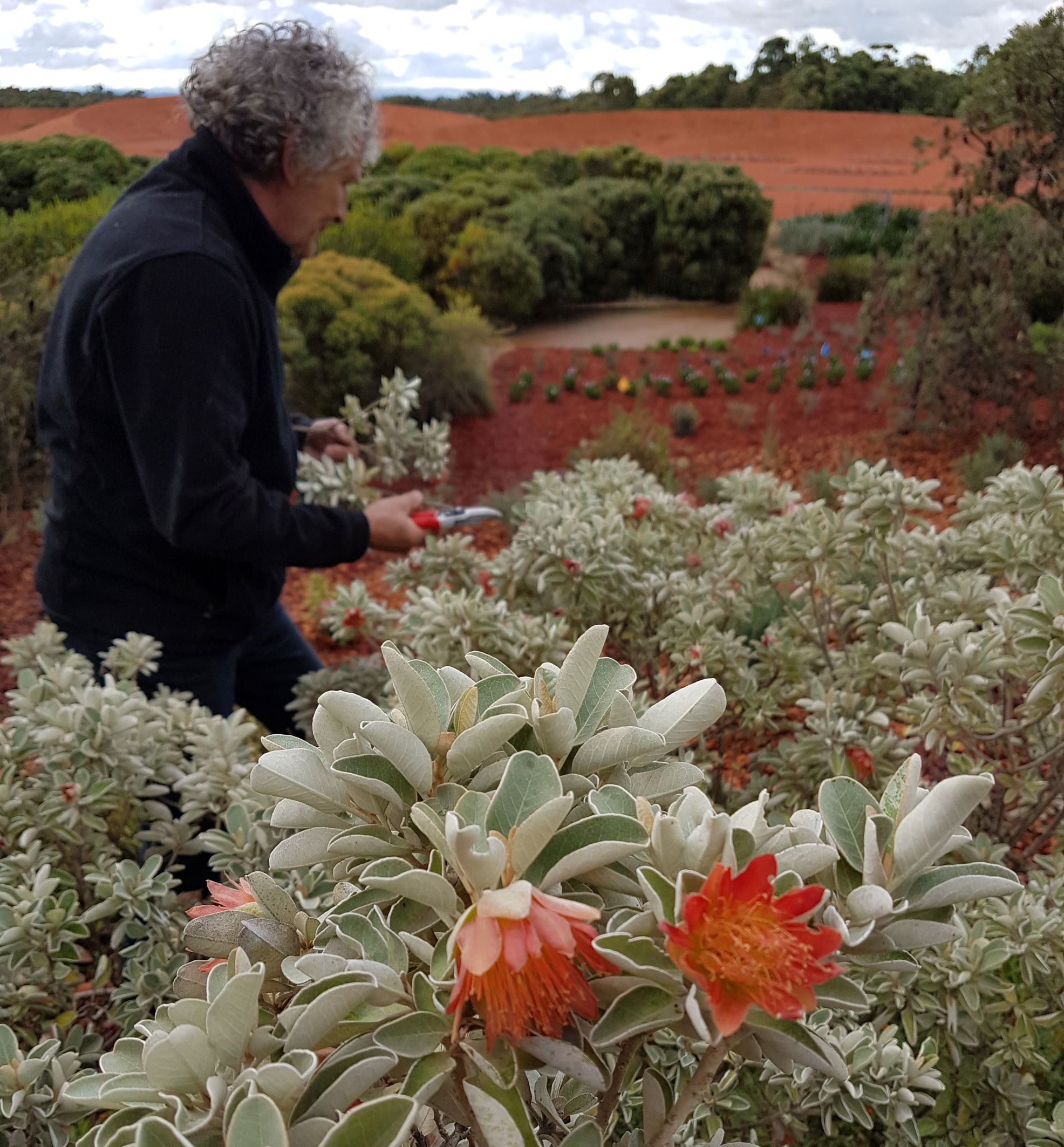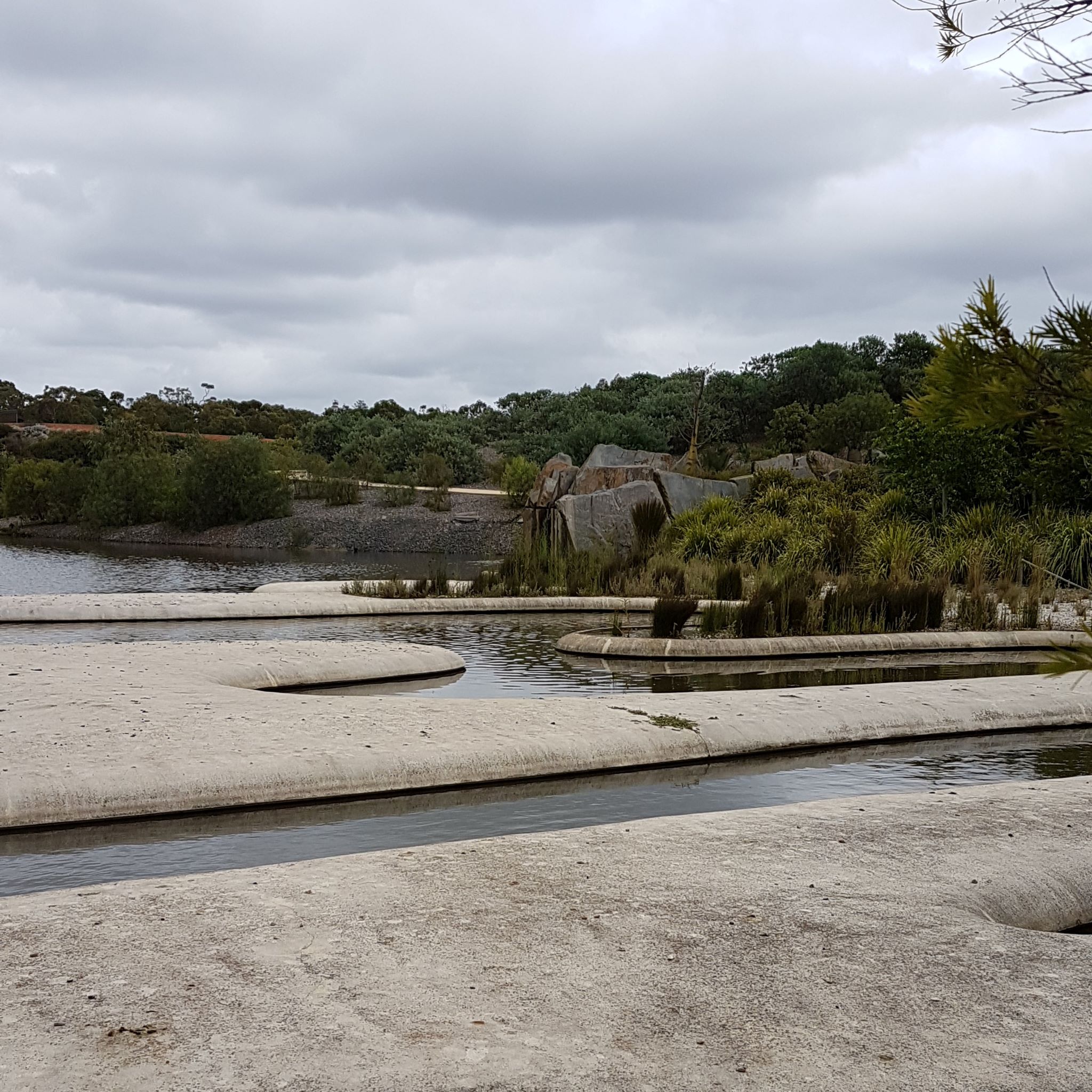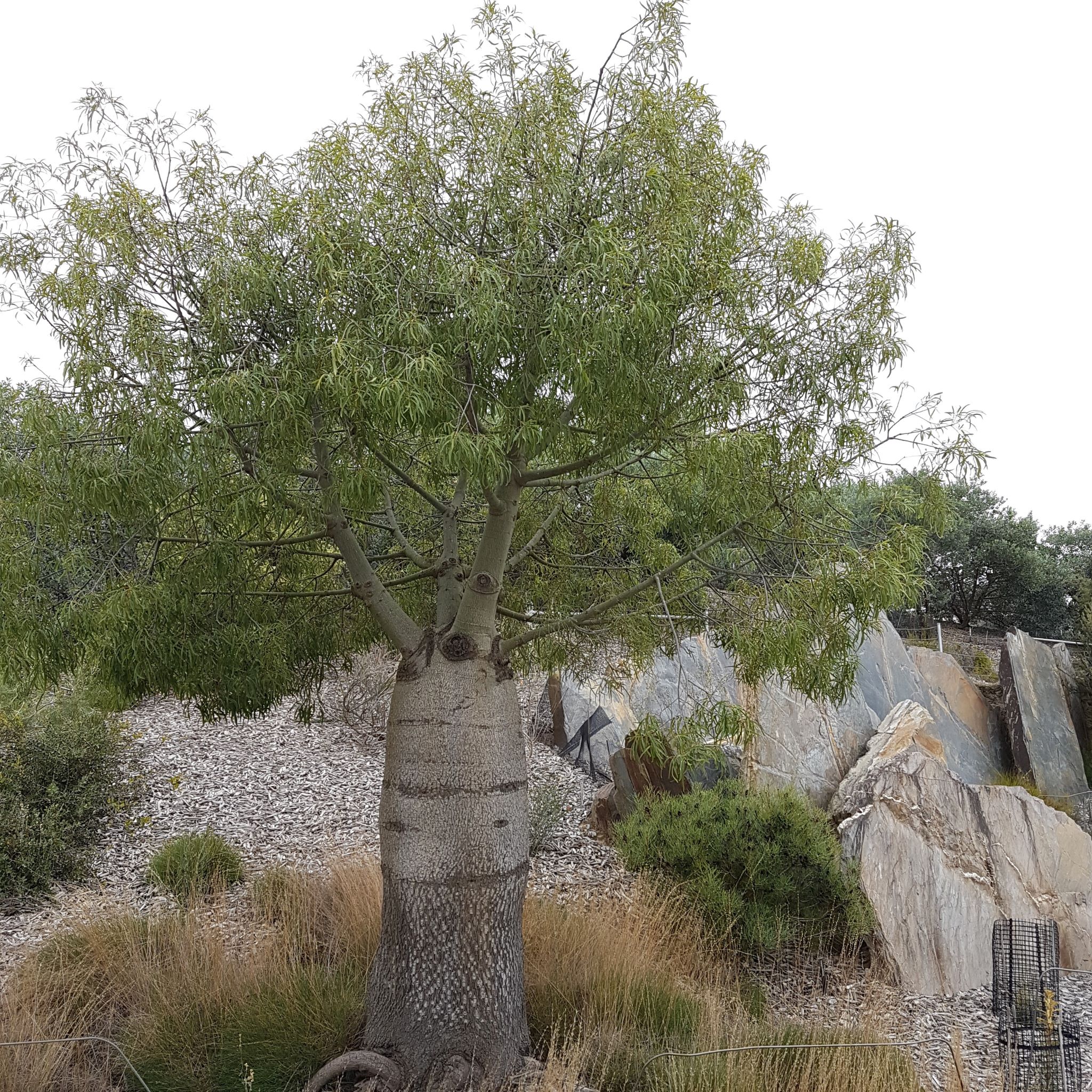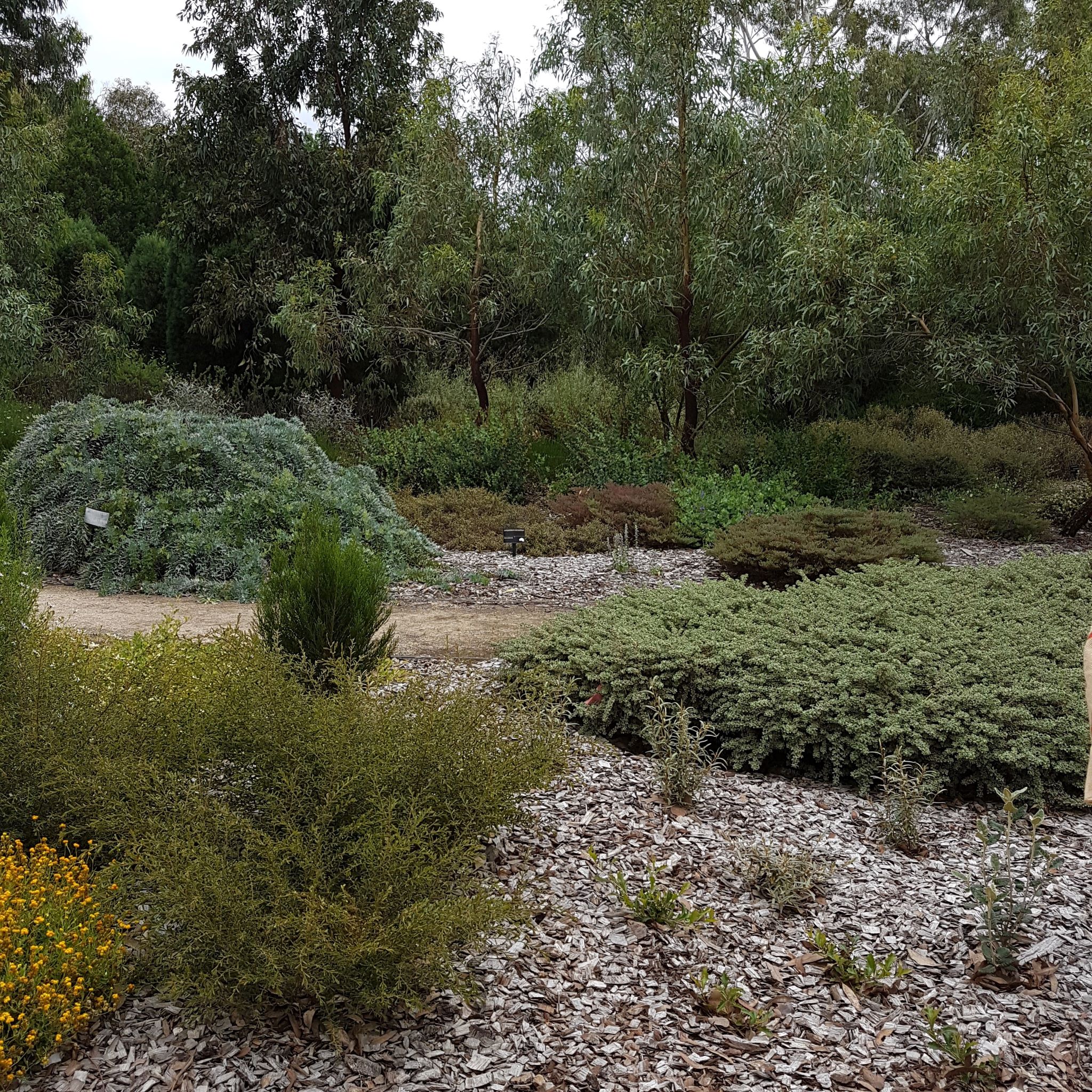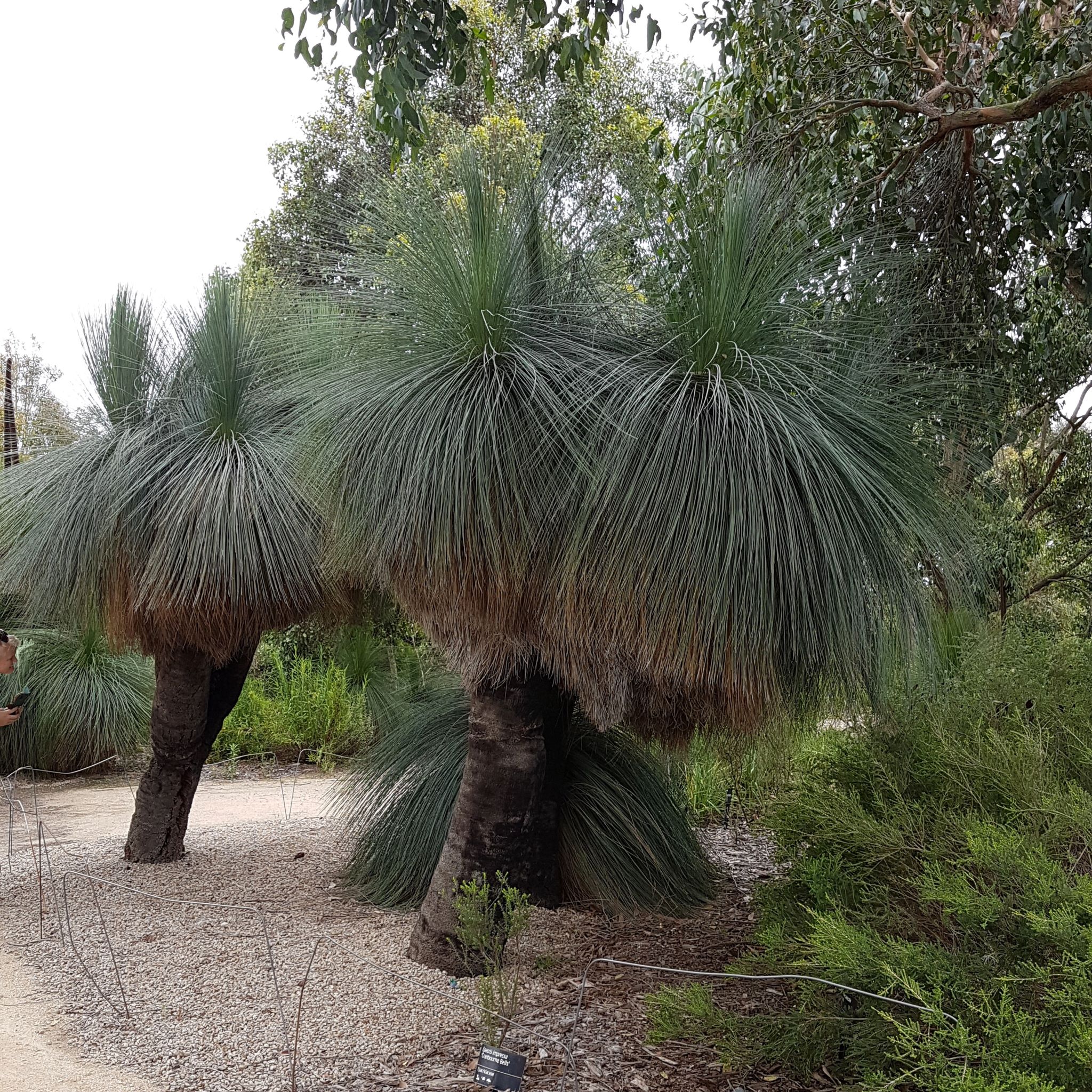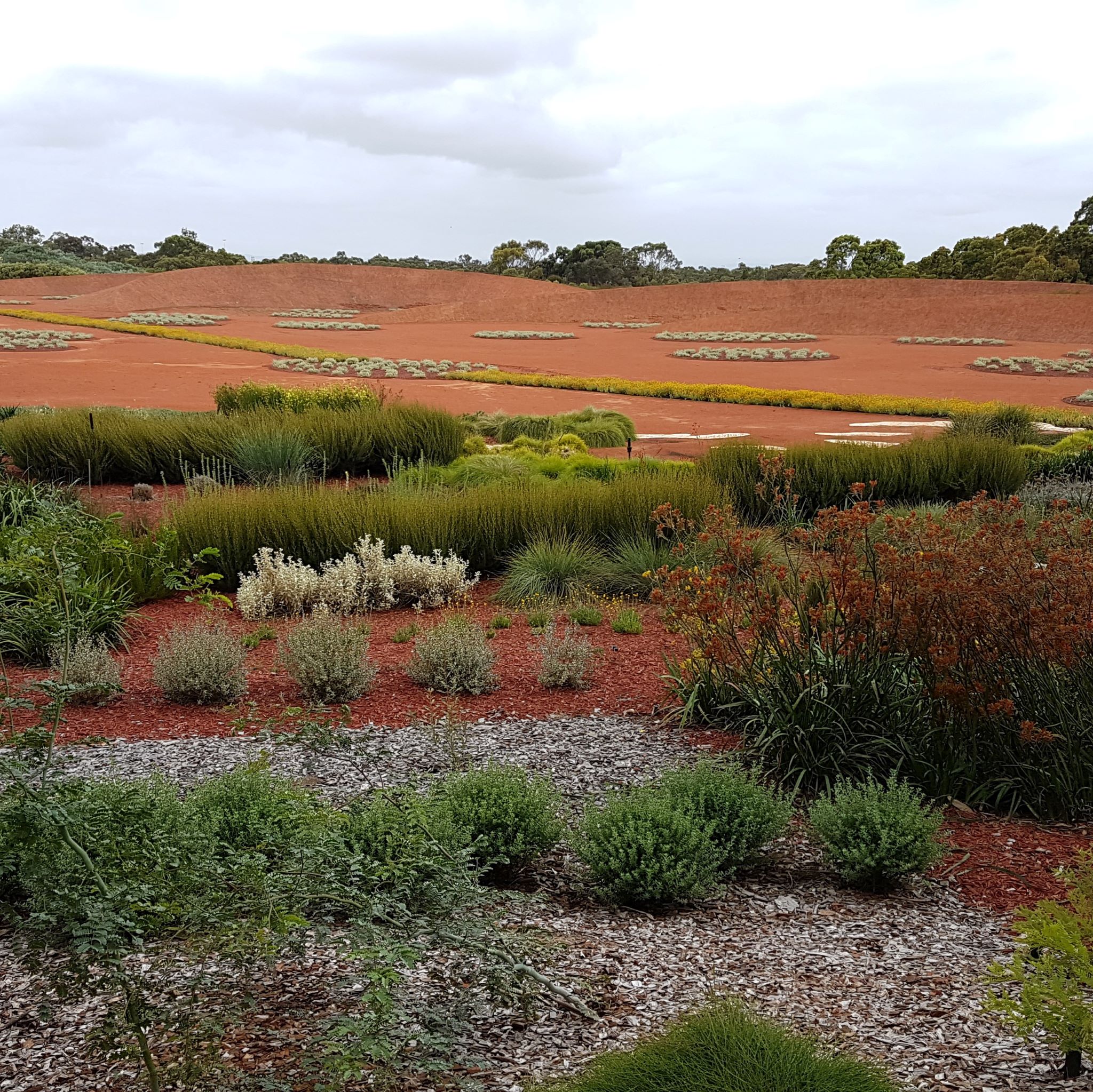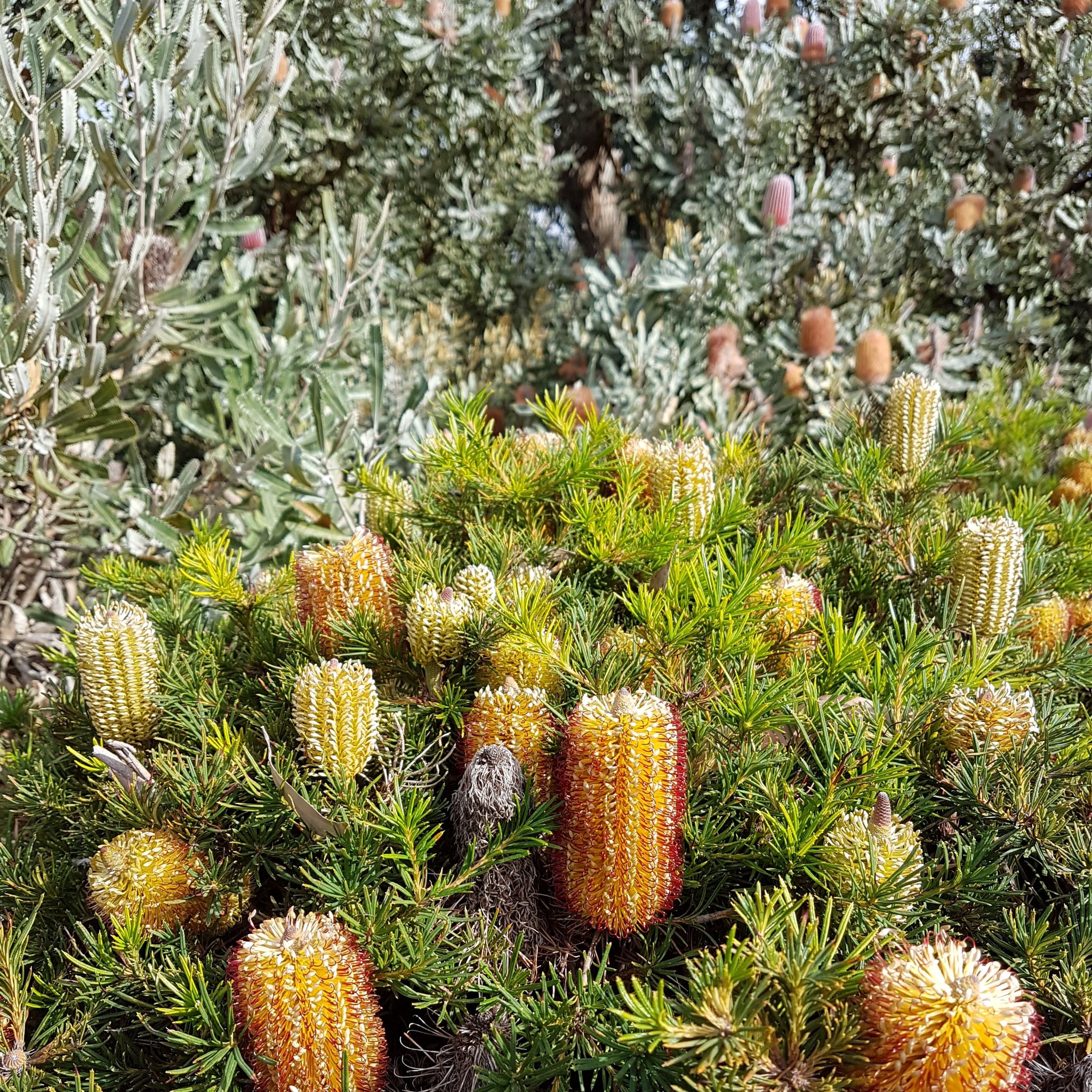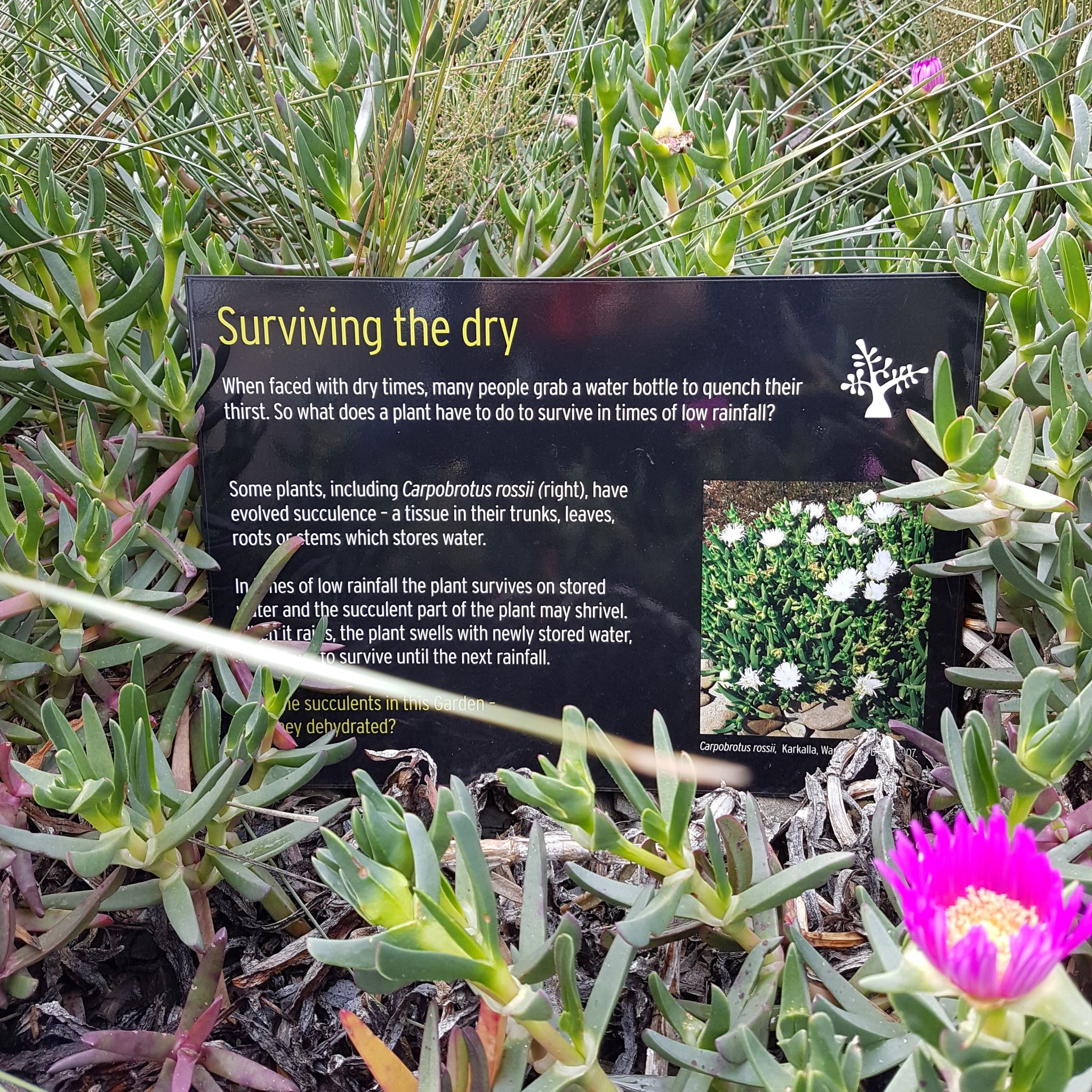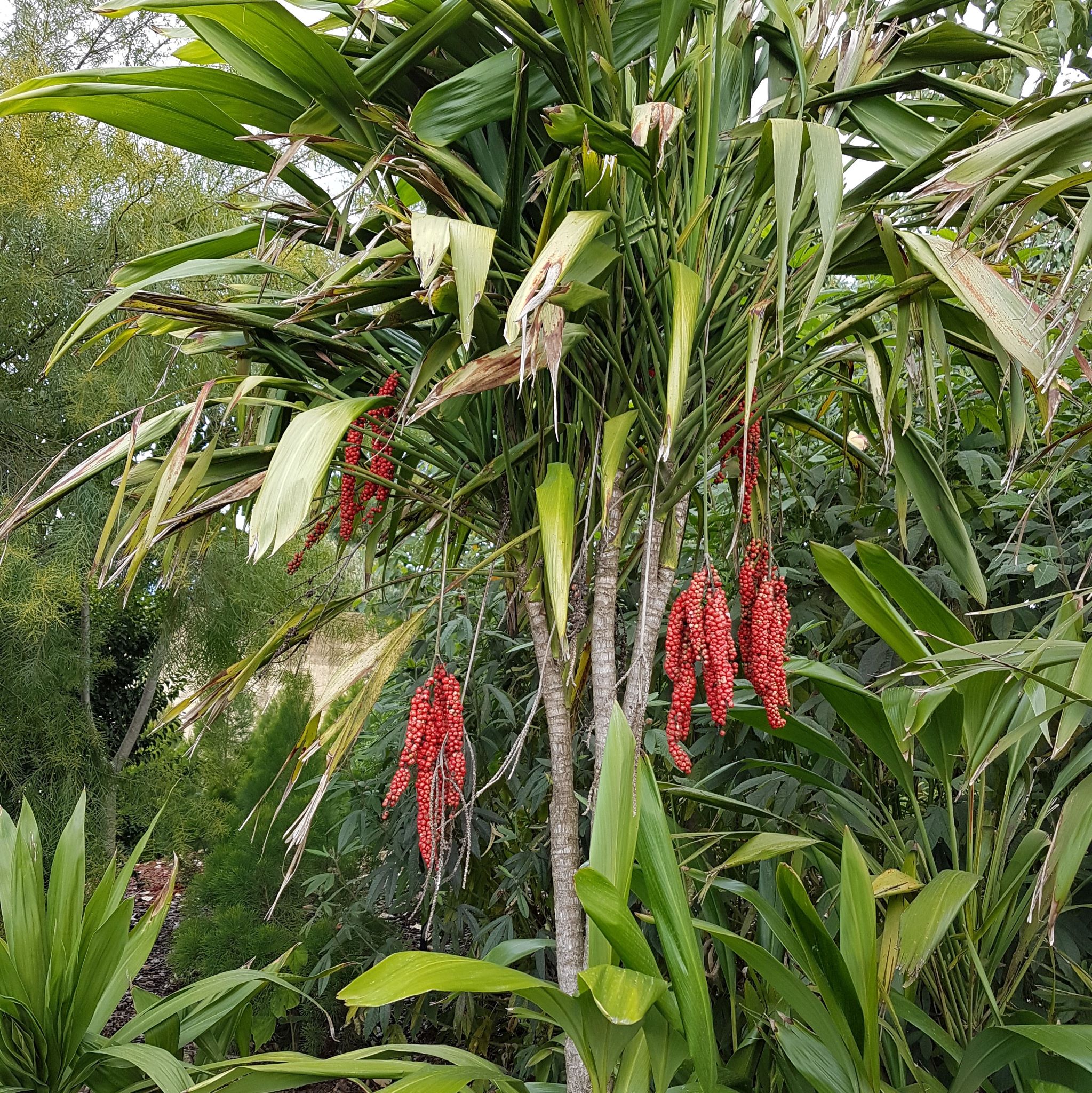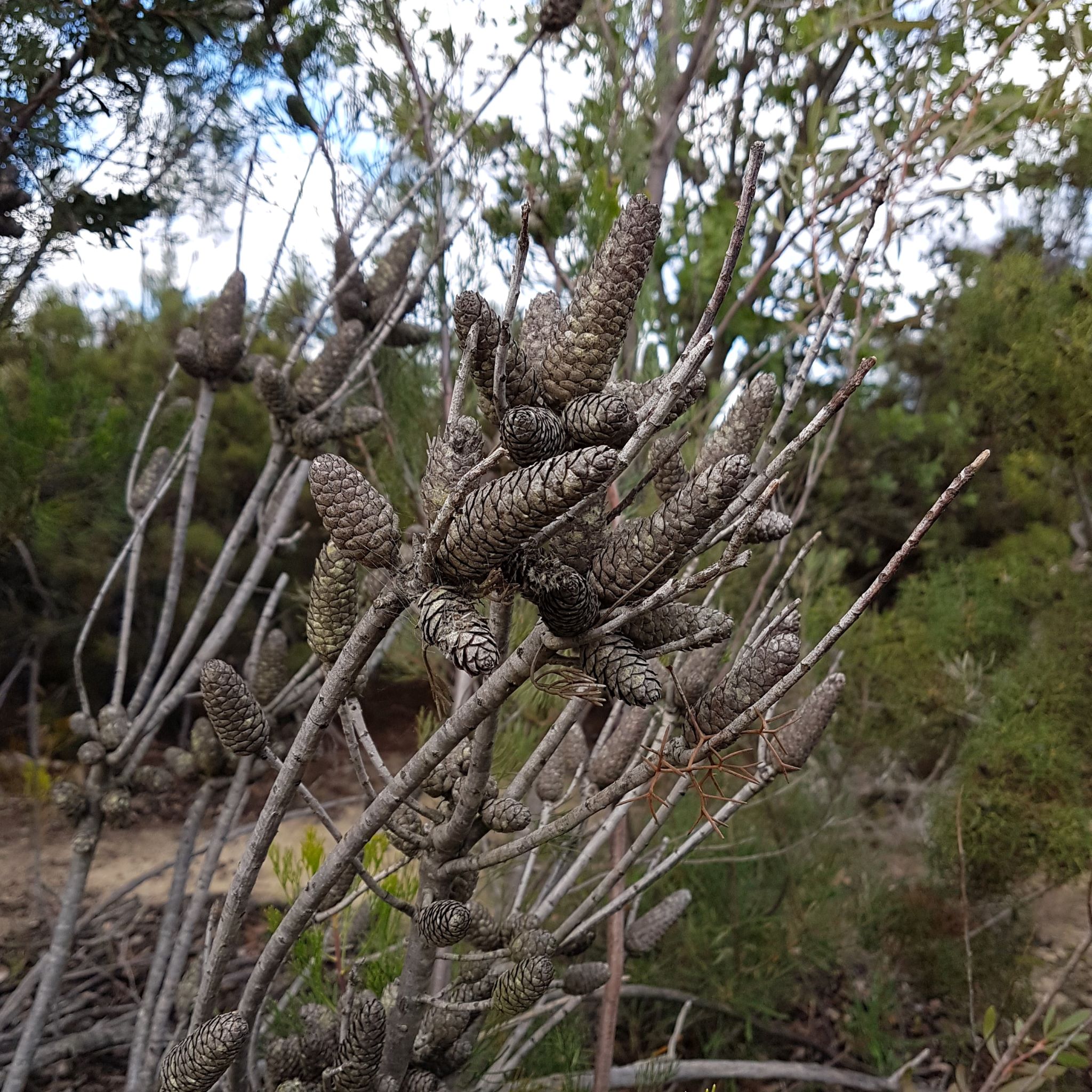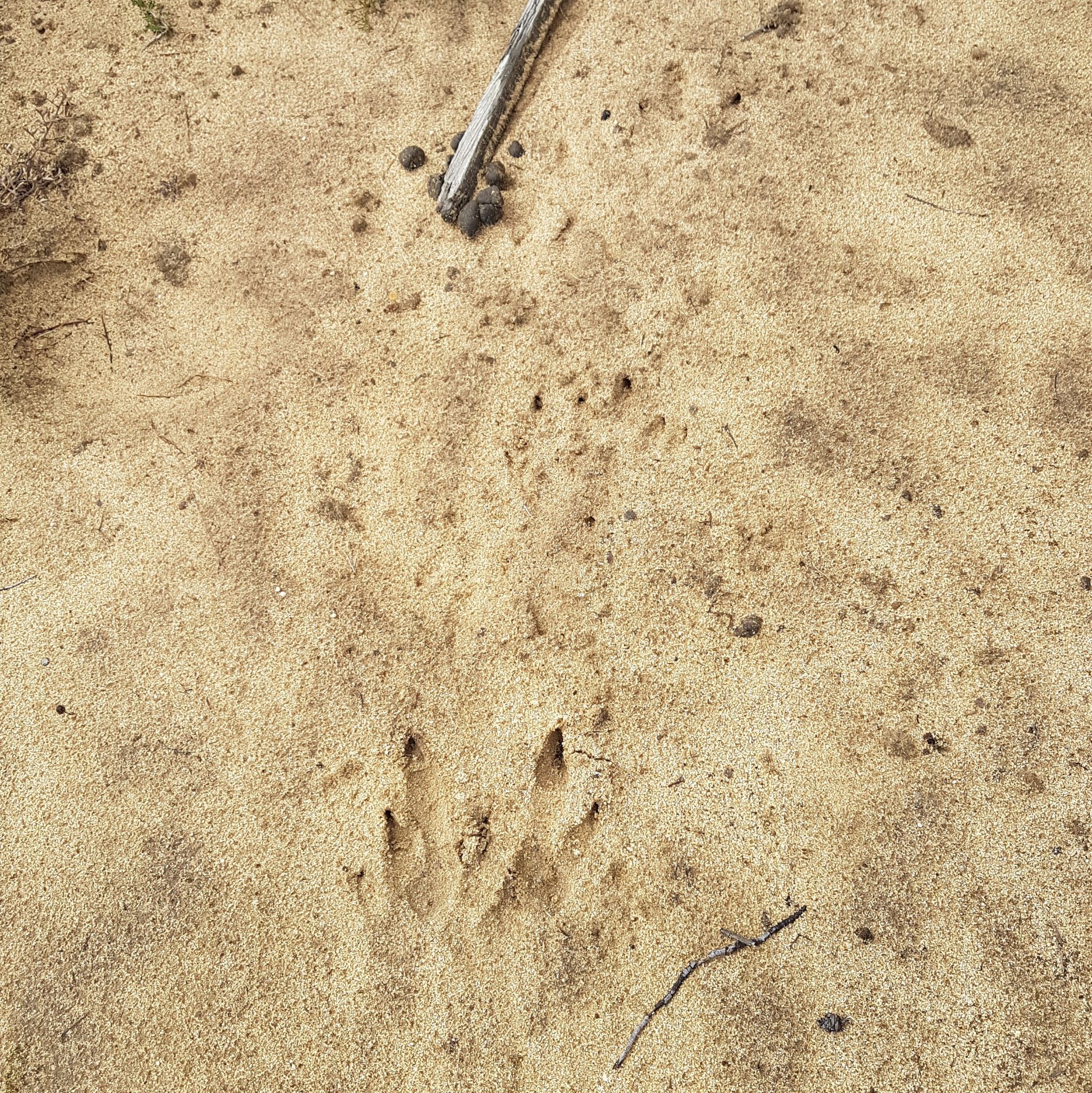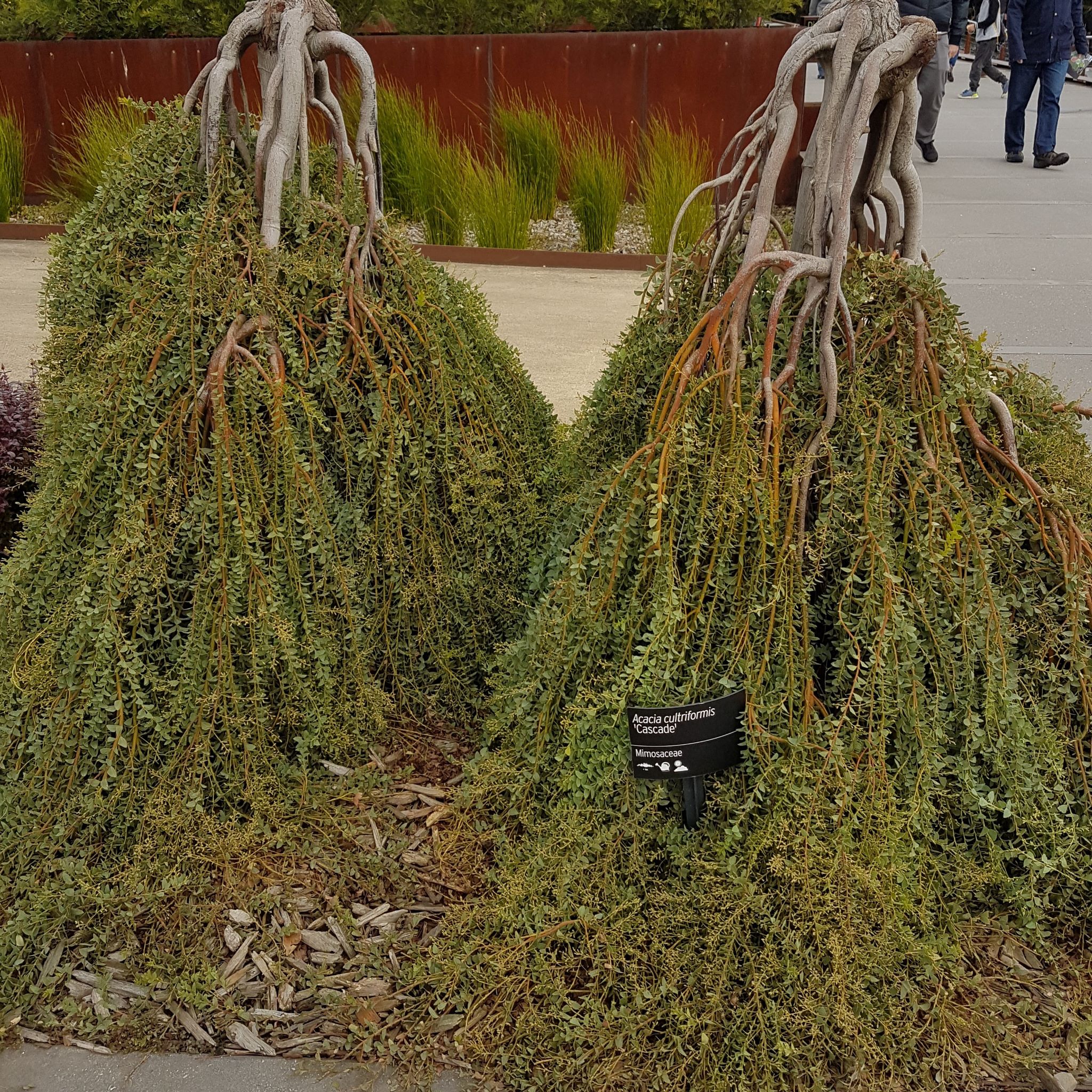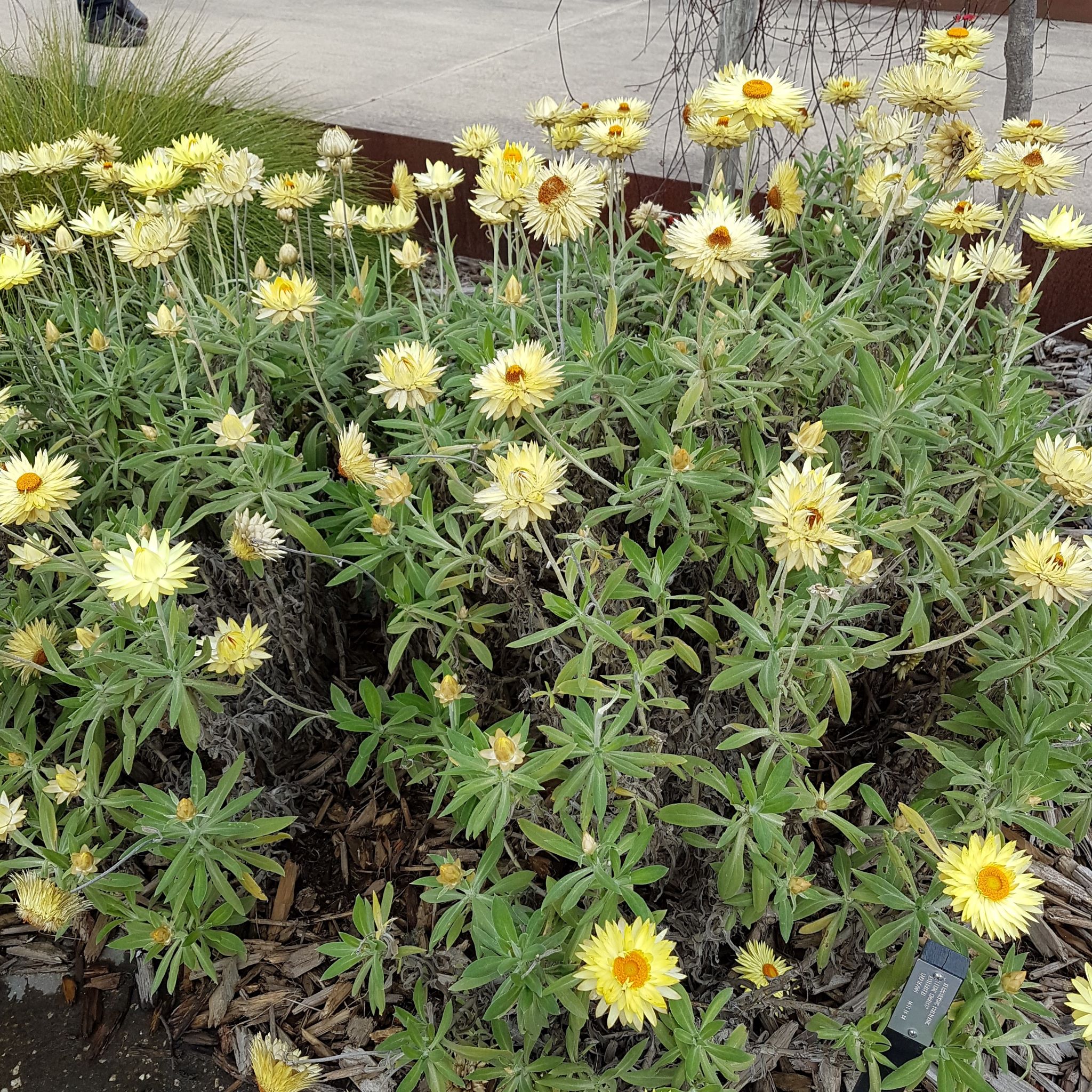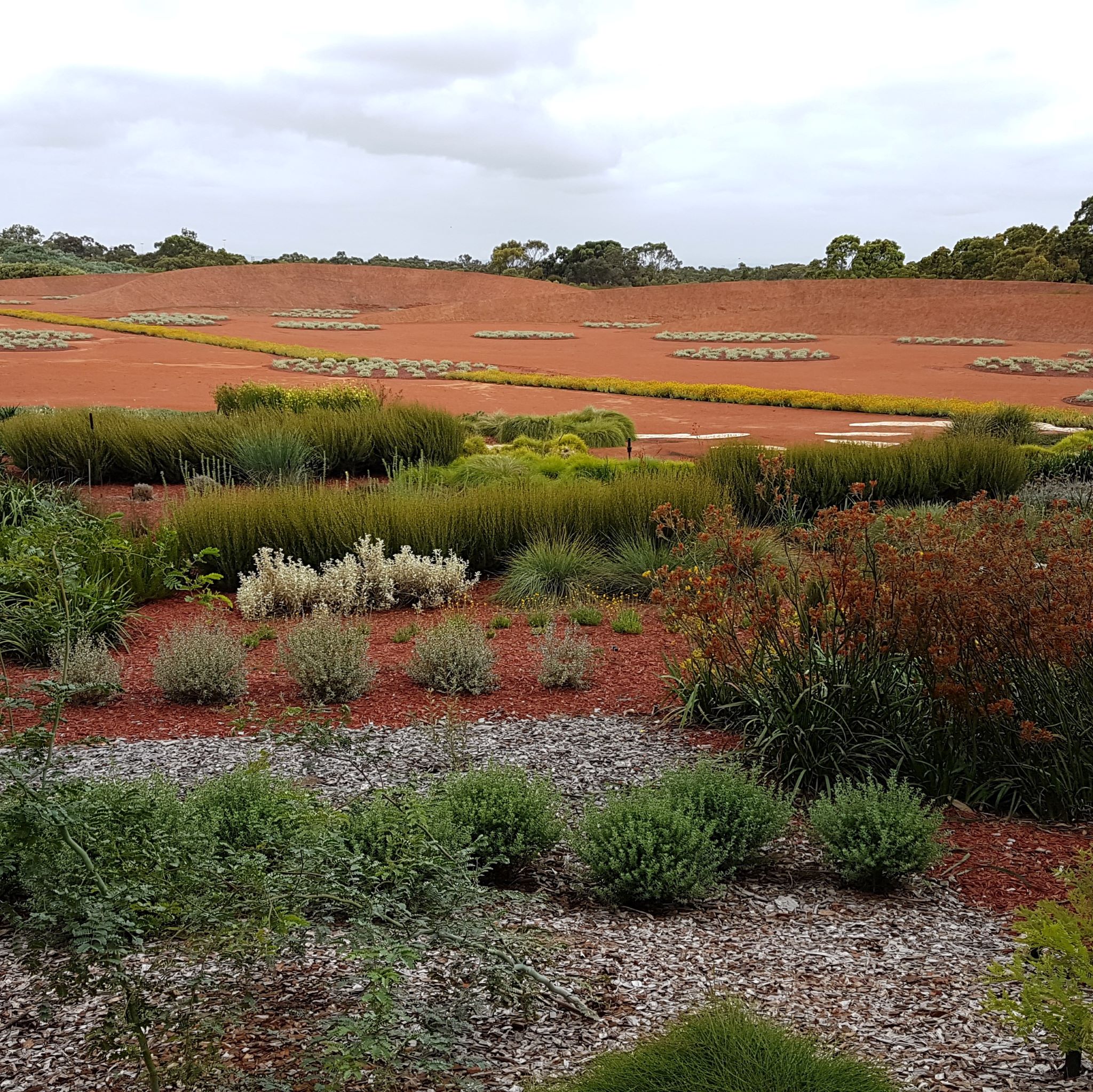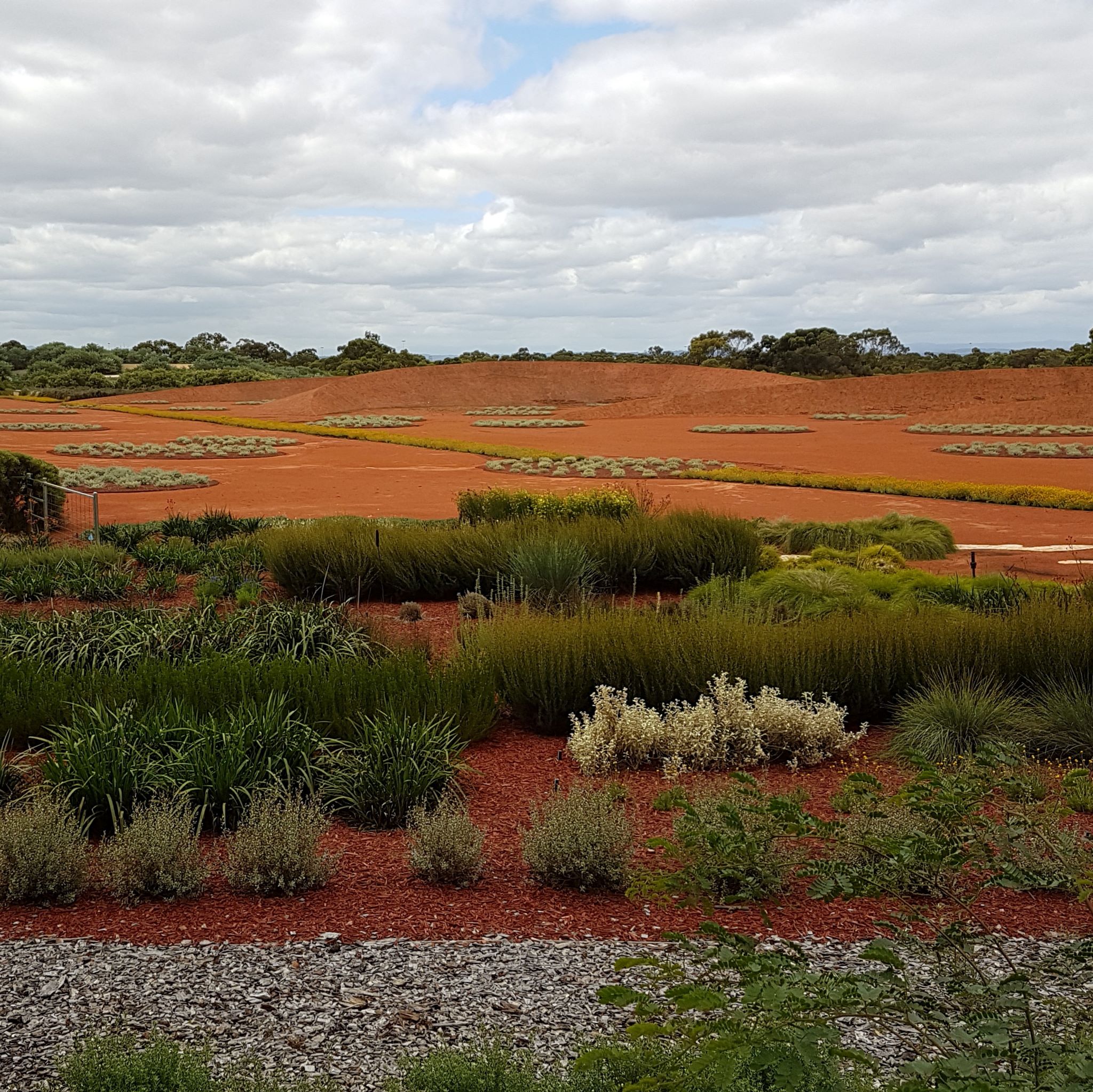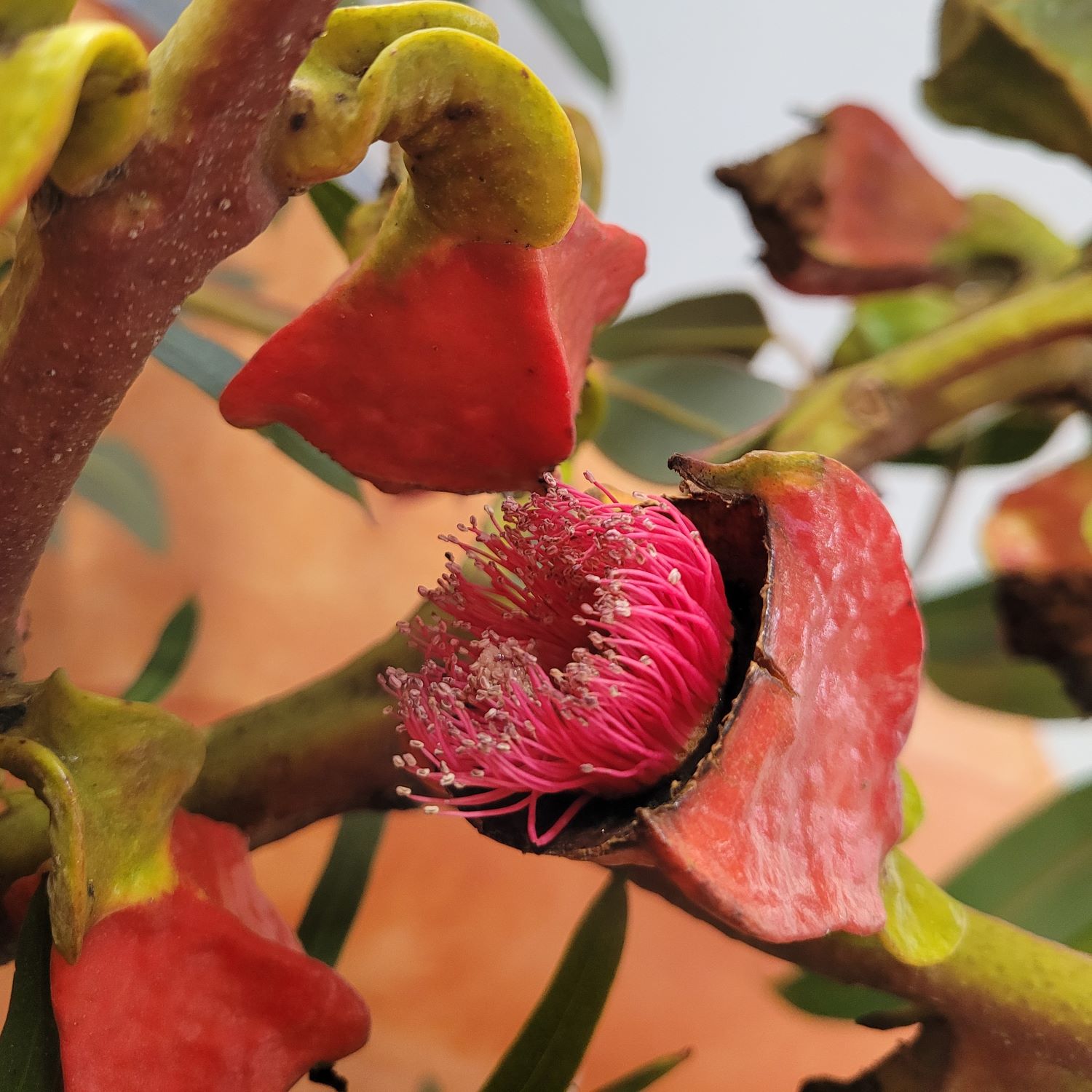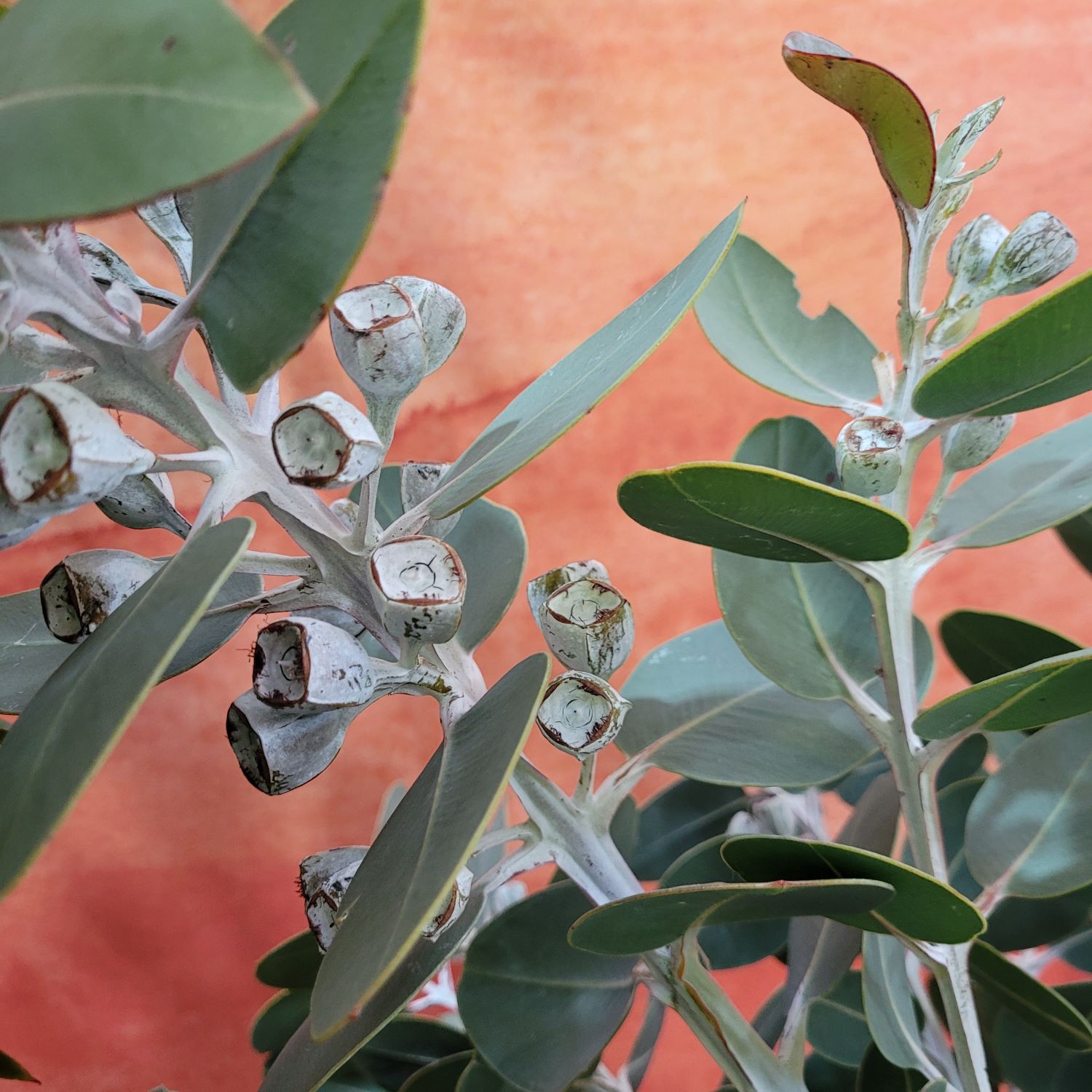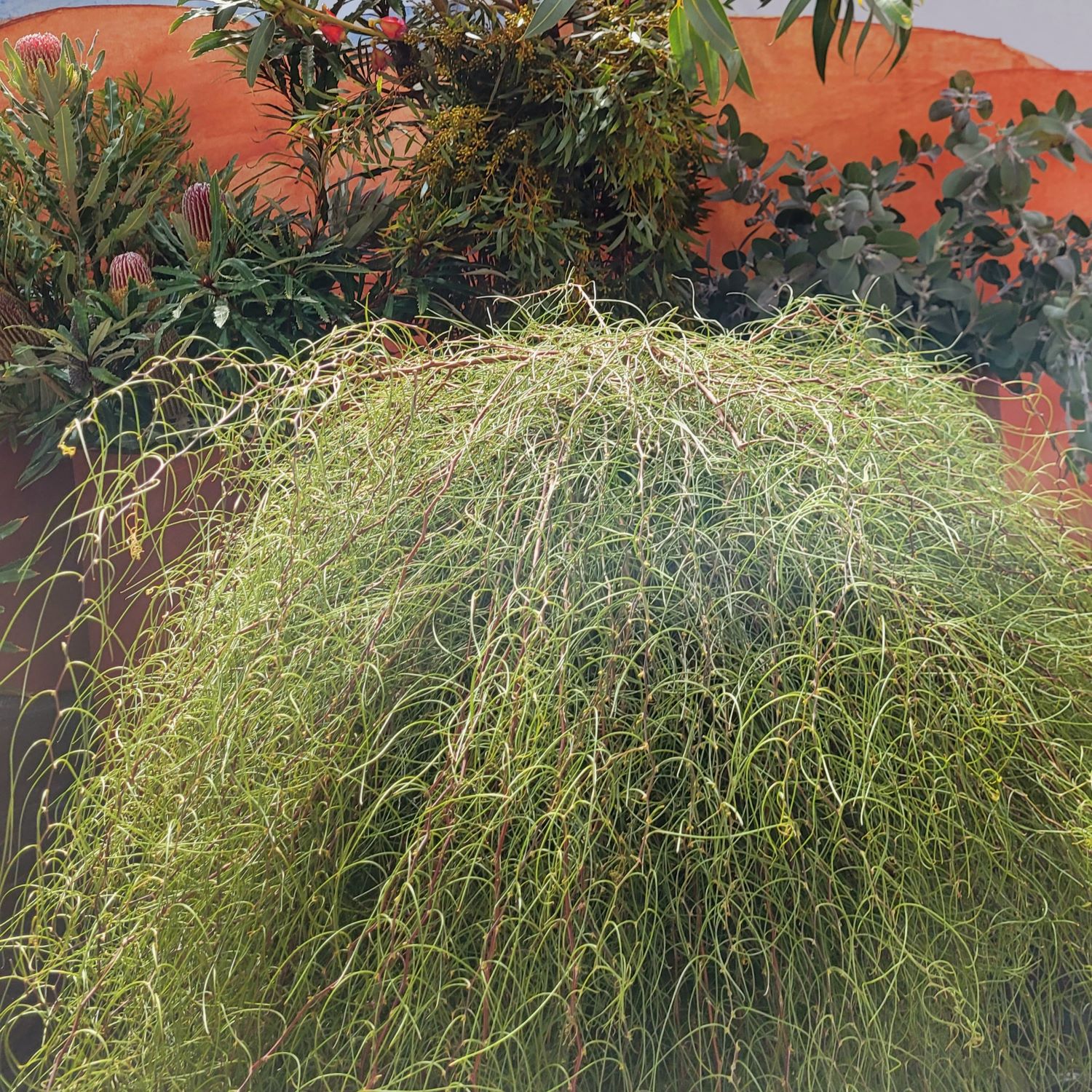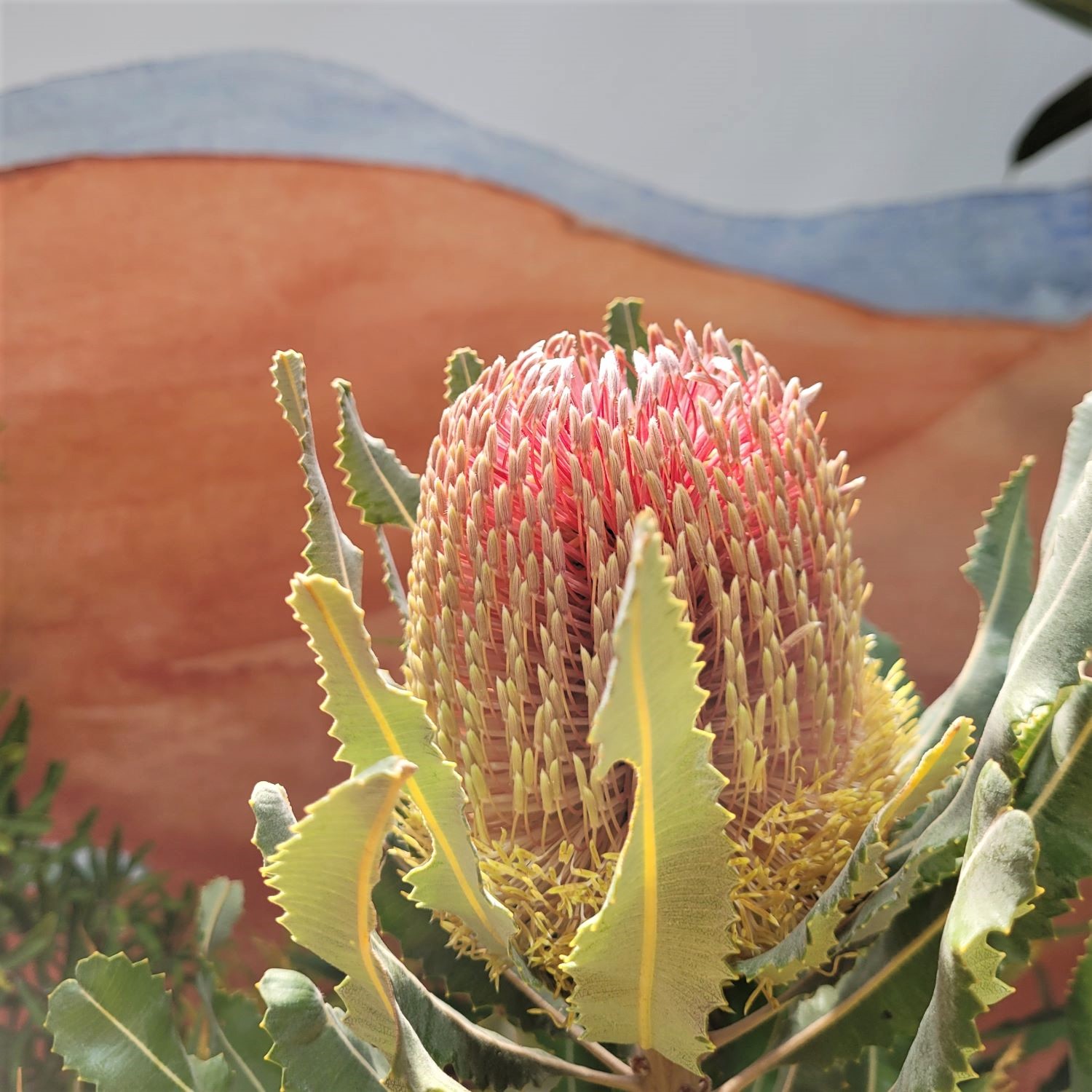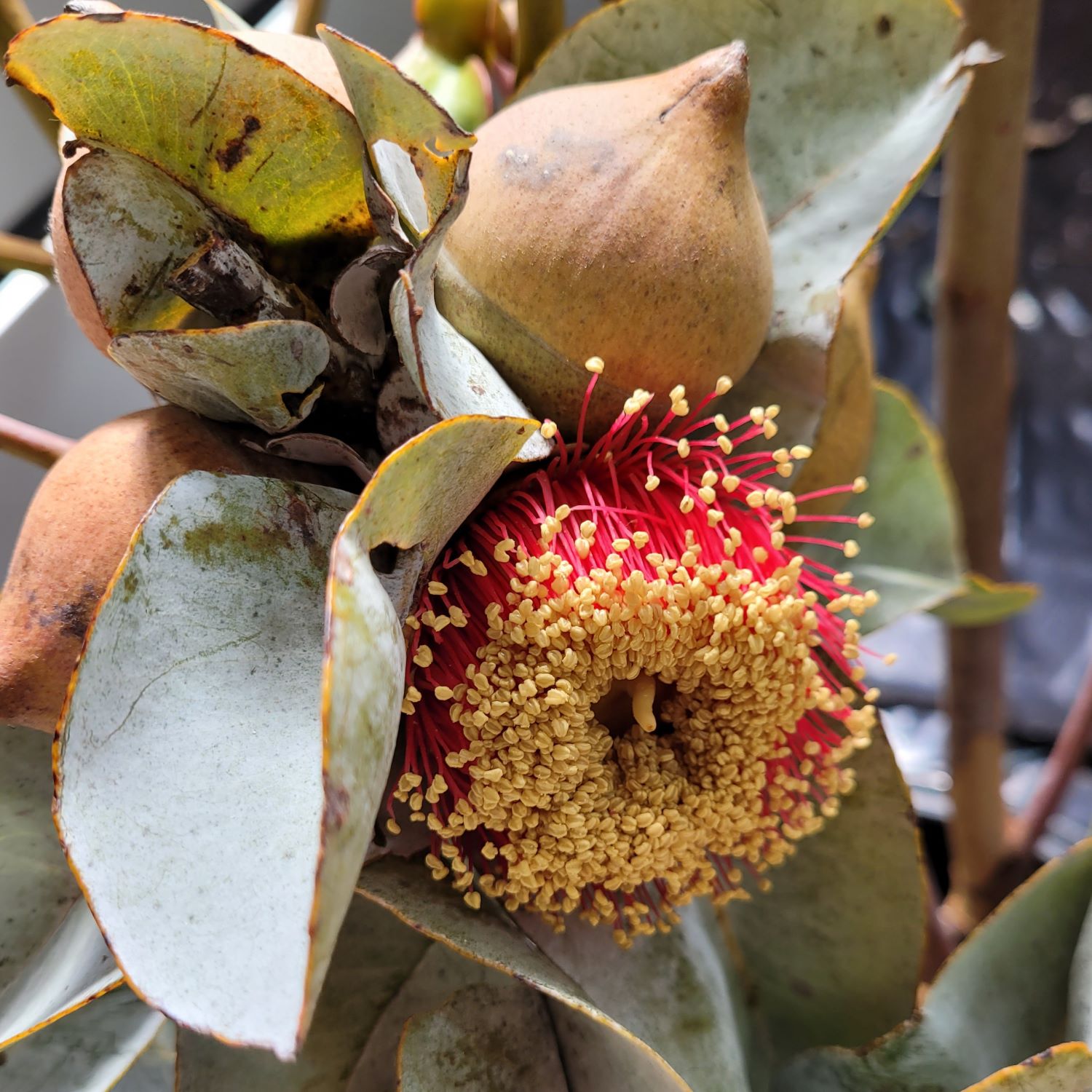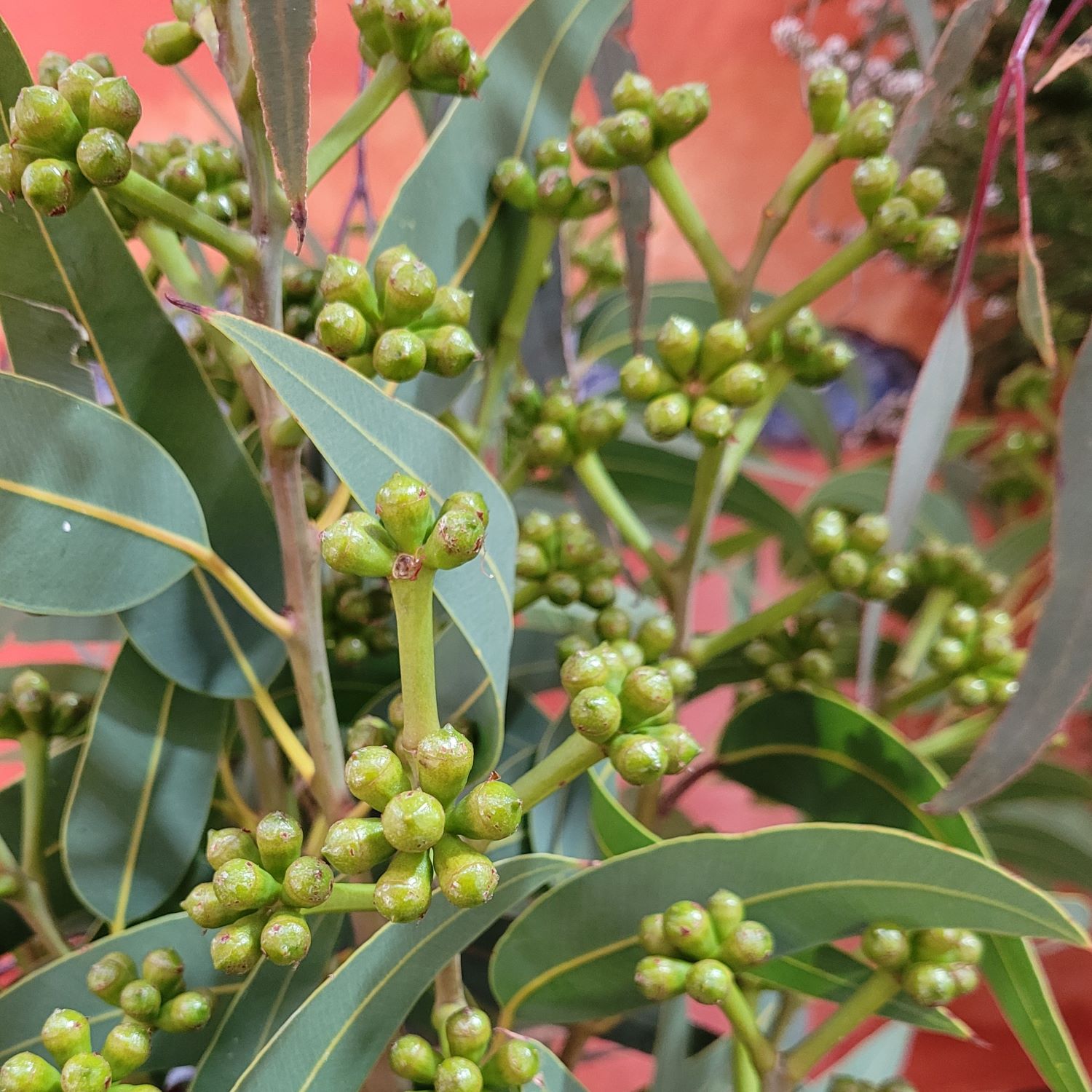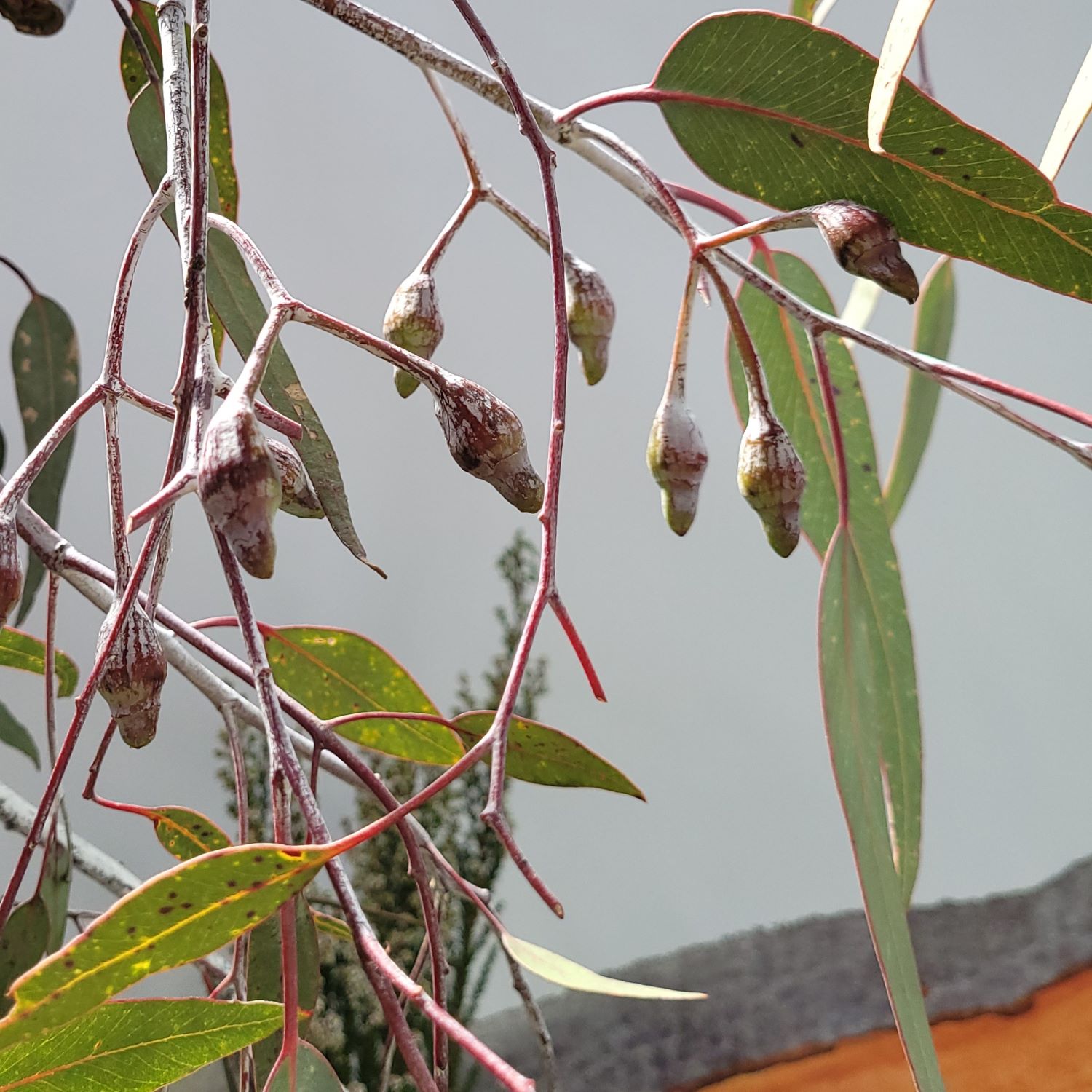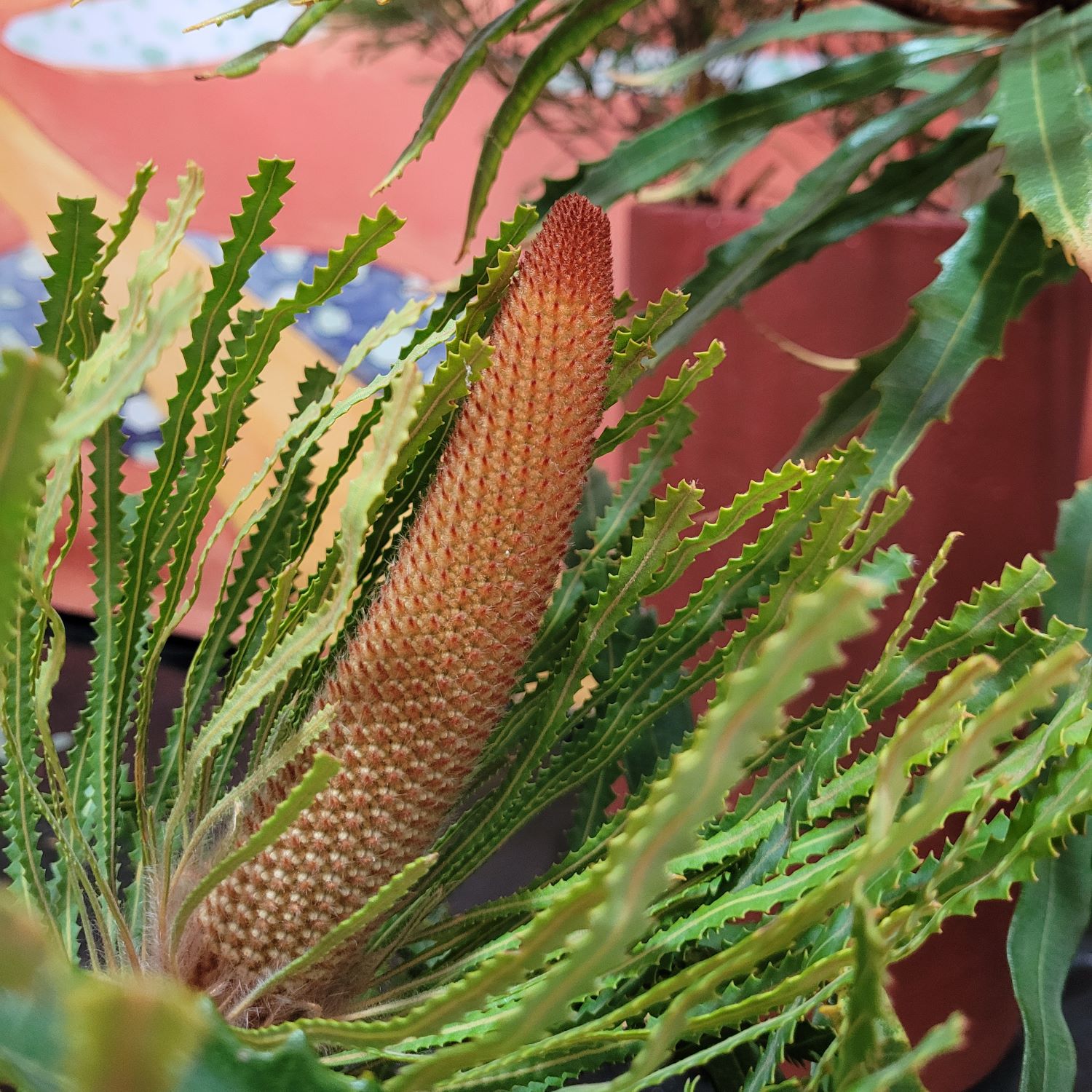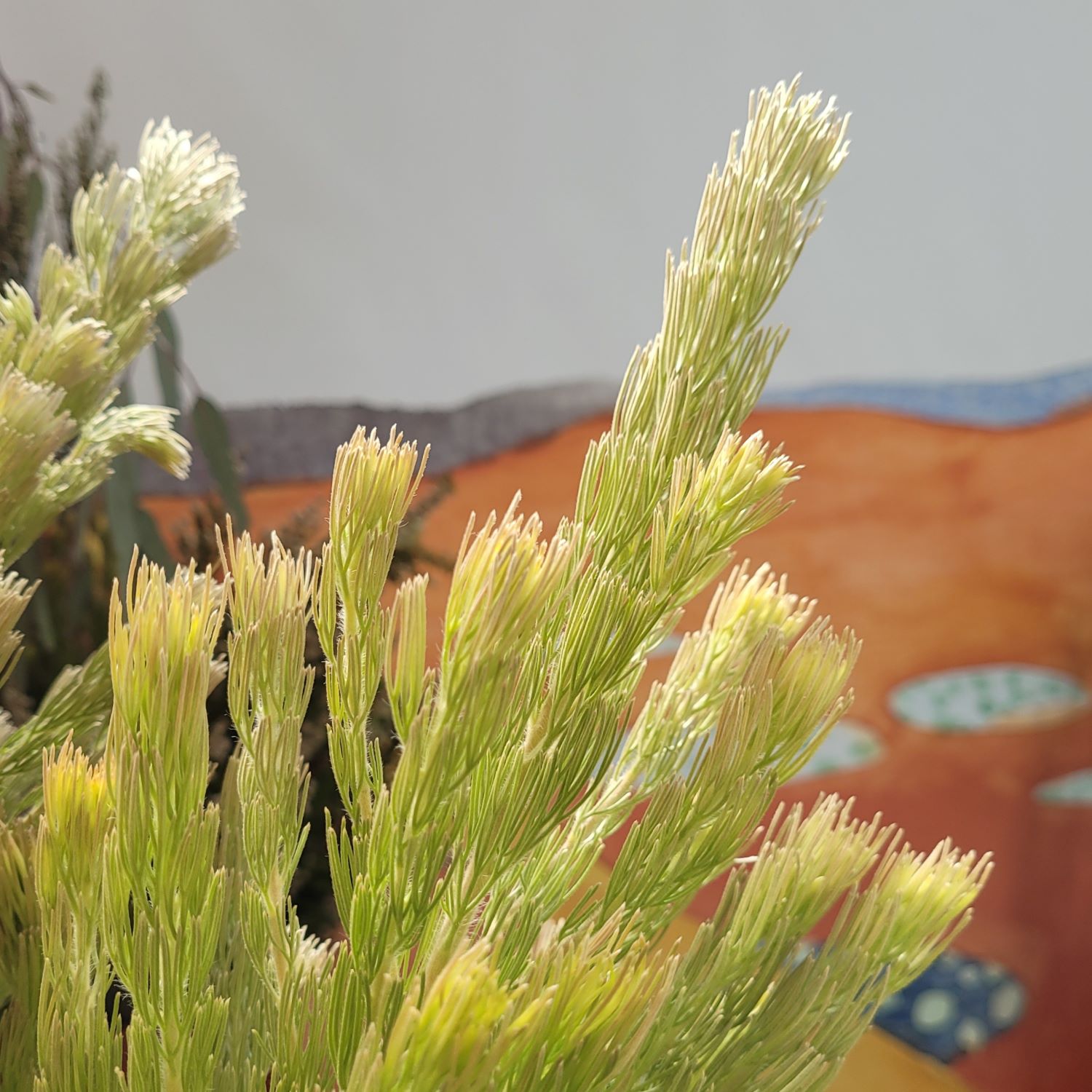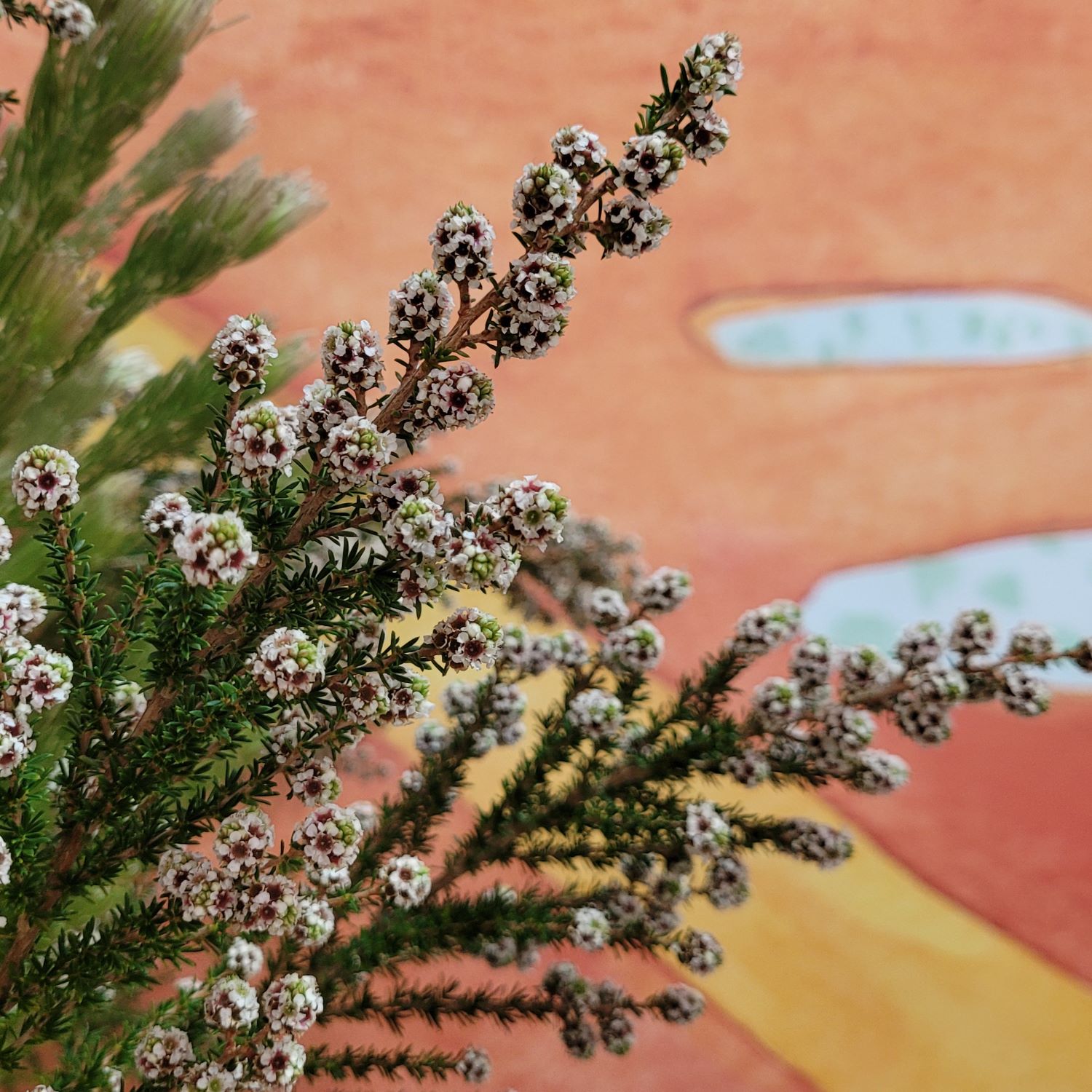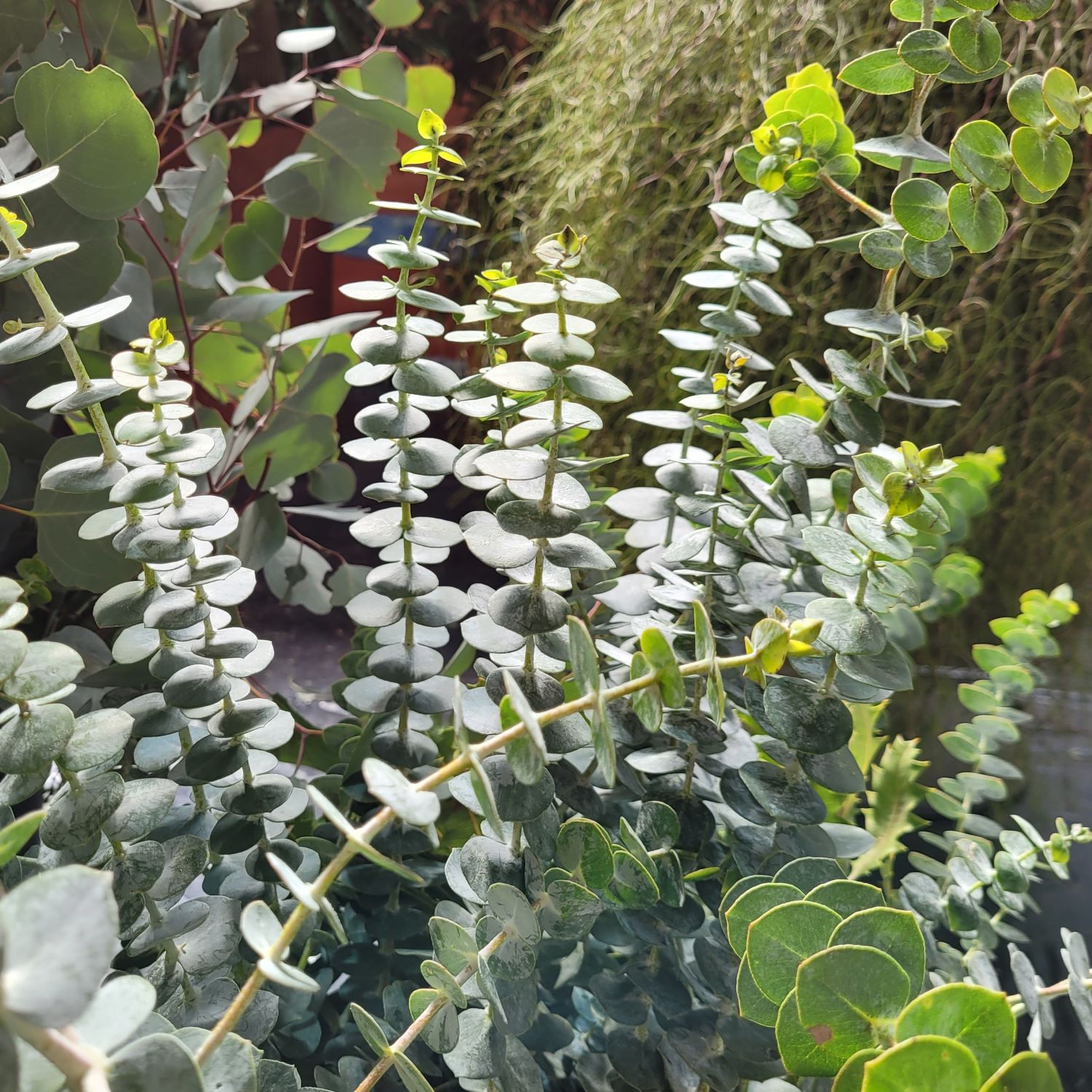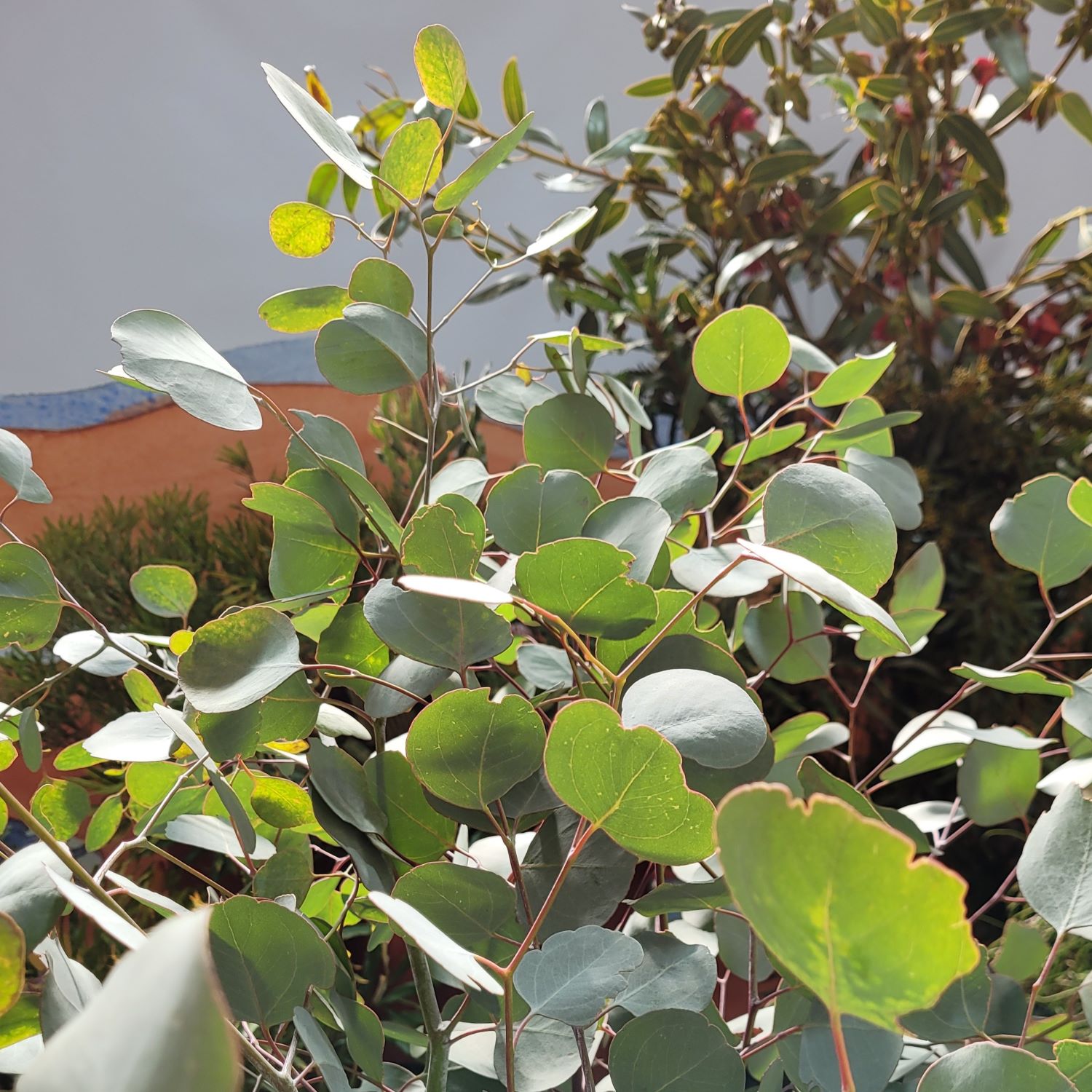Melbourne International Flower & Garden Show 2022

My response to the triple planetary crisis: climate change, loss of biodiversity and pollution.
ZERO WASTE – NATURE-INSPIRED – 100% AUSTRALIAN FLORA
In 2019, I had the great pleasure of taking a tour around the Cranbourne Royal Botanic Gardens with Horticulture Manager, John Arnott.
Gardening Australia fans might be familiar with John from a recent feature on My Garden Path.
There is a good reason John was featured. John has had an extraordinary career and his knowledge and passion is immensely inspiring.
This experience with John proved to be one of the most inspiring experiences of my floral design career. I had not visited the Cranbourne gardens previously and was captivated.
The brilliant landscaping and planting reflects the essence and diversity of Australian landforms and plants. The site demonstrates how ecosystems function and connect together to support a healthy natural environment.
We passed swamp wallabies safely hovering at the edge of dense bushland, watched bandicoots and native rats dart between bushes, and a huge variety of birds and insect life feed from the plants and surrounding earth. Seeing how the sanctuary attracts wildlife is a powerful reminder of how important the health and diversity of plant life is for supporting diverse animal populations.
At the end of 2019, with the Melbourne International Flower and Garden Show in mind, I returned with my good friend and exceptional artist Clare James who painted the Australian Garden for my display backdrop. I felt that the combination of the abstract forms and the distinctively Australian palette captured in watercolour paint would provide a perfect backdrop for a celebration of Australian flora. Of course, Clare’s painting exceeded expectations.
The flowers and foliage in my display have been very generously supplied by Jo Gardner and family from the Australian Flower Investment Company. The AFIC is situated in Lah-Arum, Victoria and supplies the Australian wholesale market with Australian and South African species, including Banksia and Protea, a wide range of native foliage including Eucalyptus and Acacia, and wildflowers such as Thryptomene and Rhodanthe.
Growing climate and soil-suited indigenous species outdoors is the most climate-friendly form of farming flowers and plants. Not only is the local biodiversity of the immediate environment supported, but growing in this way results in a greatly reduced environmental footprint. This is because the inputs required for cultivation – such as infrastructure, fertilisers, water and chemicals – are significantly reduced when compared to producing counter-seasonal varieties in heated greenhouses.
MATERIALS: chicken wire, string, sisal rope, flower buckets, plant pots, steel stands, plant material.
ZERO WASTE: This display will produce no waste.
The planter pots were damaged seconds purchased for the display and will ultimately be used for their intended purpose.
The chicken wire inside the flower buckets has been salvaged from old fencing wire destined for hard rubbish and will be recycled at the end of its useful life.
The plant fibre string is compostable – as is all the plant material which has no added paint, dye or support wires.
The ground cover is sawdust from reclaimed, untreated Oregon from Peninsula Recycled Timbers – wonderful people, beautiful recycled timber and huge supporters of our wildlife caring community. After the show, the sawdust will be used to suppress weeds on our garden paths at home.
This piece is my response to the triple planetary crisis: climate change, loss of biodiversity and pollution. All industries must look to nature-based solutions to solve these problems. It is in the interests of florists and the cut flower industry to take the lead.
Big thanks to all involved for your wonderful support, – especially Lamond Contractors, Croydon, for going the extra distance to ensure I had some beautiful Silver Princess gumnuts.
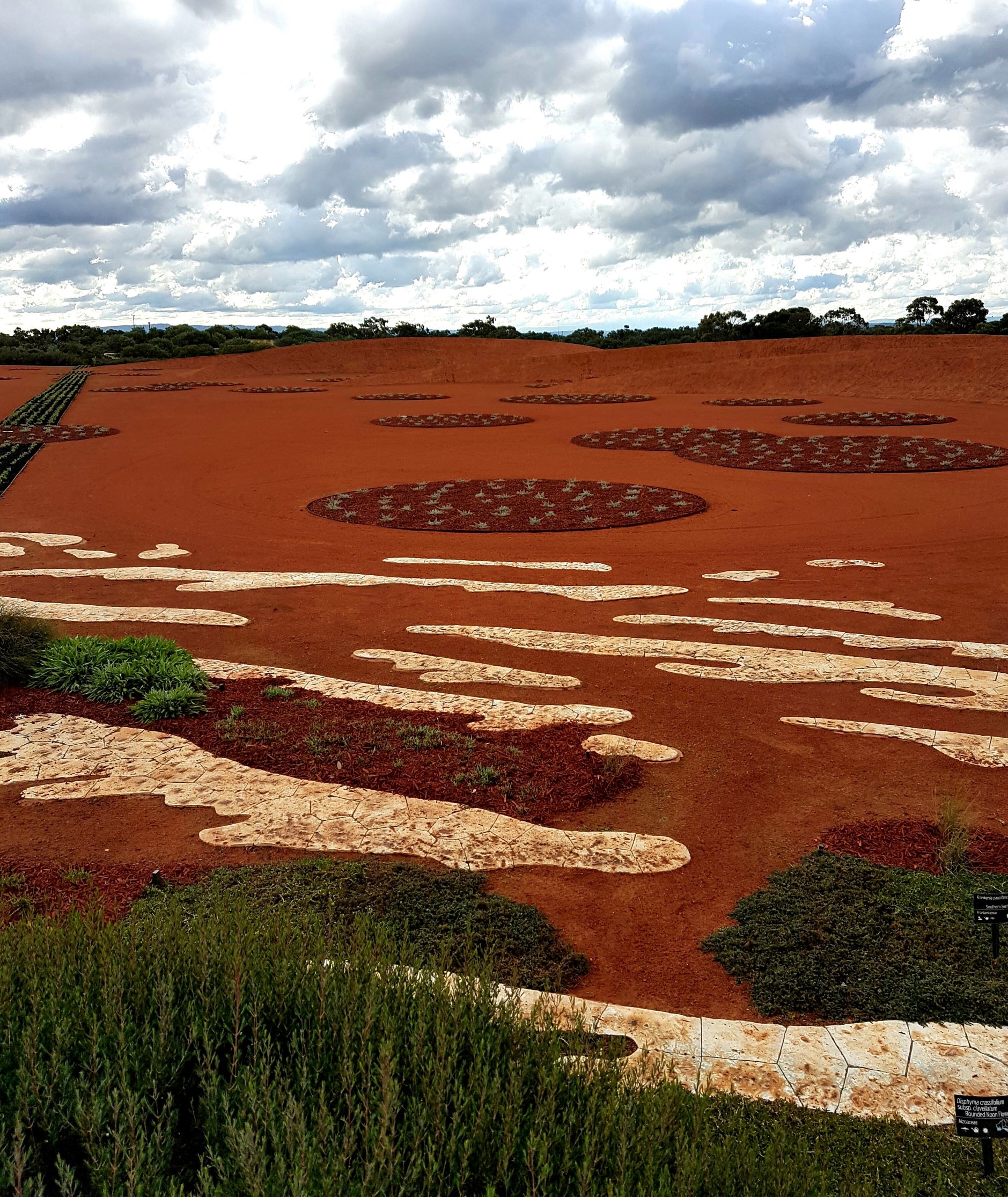
The Cranbourne Royal Botanic Gardens is a spectacular sanctuary for Australian wildlife on the edge of Victoria’s urban sprawl.
From the Cranbourne Royal Botanic Gardens
Varieties on display from the AFIC
